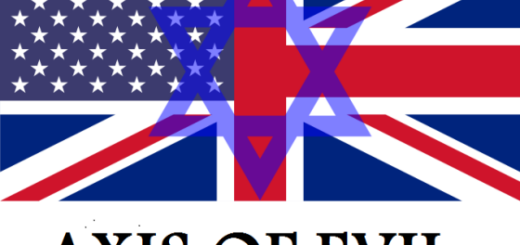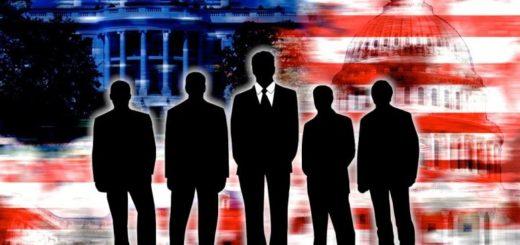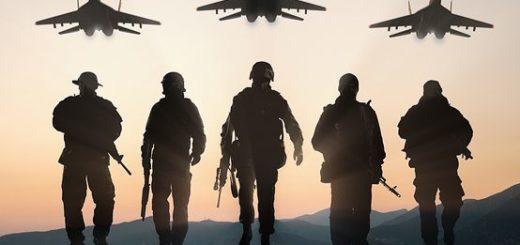Americans Need to Realize That the Criminals Who Run Their Media Are THE ENEMY & Russia Has Always Been a Great Country AND America’s Ally in TWO WARS: Civil War and WW2; Only the Lying Media Makes Russia an Enemy LIES LIES LIES!!!!!
Through the lens of history: When Russia and the US were allies
May 9, 2016Victoria I. ZhuravlevaOPINION
Victory Day in Russia and the events of World War II should be a reminder that historically Russia and the US were close allies and economic partners.

Russian veteran Nikolai Beljajev, 92, center right, dances with Hannelore Danders, center left, during the 70th anniversary celebrations of the so-called Elbe Day in Torgau, eastern Germany, April 25, 2015. The World War II link-up of U.S. and Soviet Forces took place here at the river Elbe on April 25, 1945. Photo: AP
During a time of crisis in U.S.-Russia relations, it is not in vogue to talk about their shared history, a time when ideological and political differences didn’t prevent the governments and people of both countries from helping each other and contributing to bringing stability to the world order.
The events of World War II should be another reminder that Russia and the U.S. have a common historical legacy and were close allies when they joined the anti-Hitler coalition. Under the 1941-1945 Lend-Lease Act, the U.S. provided the Soviet Union with more than $11.3 billion in financial aid. In addition, Washington sent a significant amount of food and provisions, in addition to 375,000 American trucks (one-third of all Soviet trucks), 15,000 planes, and 2,000 locomotives. The U.S. delivered the aid partly by its Arctic convoy through Russia’s northern cities of Arkhangelsk and Murmansk.
Even though the Western front in Europe was opened only in June 1944, it was primarily the Soviet Union that had to withstand Nazi Germany and face a great number of casualties. However, it is historically wrong to claim that the U.S. didn’t contribute to the fight against Nazi Germany and just focused their efforts in the Pacific battleground. After all, the Lend-Lease programs contributed to the Soviet fight against Germany both at the front and behind the lines.
ALTHOUGH RUSSIANS AND AMERICANS MAY ASSESS THE KEY EVENTS OF WORLD WAR II DIFFERENTLY, THE VICTORY OF 1945 WAS AND REMAINS SHARED
Although Russians and Americans may assess the key events of World War II differently, the victory of 1945 was and remains shared. In fact, it is a matter of the common memory: the second front, the Lend-Lease program and even the famous American canned meat, which many Soviet soldiers saw as the best food in the world. The symbol of the Soviet-American alliance as part of the anti-Hitler coalition became and remains the April 25 historic link-up between Soviet and American soldiers at the Elbe river in 1945.
Meanwhile, World War II is not the only example when Russia and the U.S. cooperated closely. During World War I, they were allies as well and fought against Germany as part of the Entente, which also comprised the United Kingdom and France.
U.S.-Russia political collaboration as seen through the lens of history
In fact, the Russian Empire and the United States had been maintaining friendly relations since the foundation of the U.S. as a nation and throughout the entire nineteenth century. It can be explained by the fact that Russia and America didn’t have serious geopolitical contradictions, there was no economic rivalry between them, and they found it necessary to withstand the geopolitical ambitions of Great Britain during the period of Pax Britannica.
Russia tried to help the United States, which was not included in the club of great powers, to raise its international status. The U.S, in turn, was seen by Russia as the source of inventions and technological innovations. Until the first crisis in their bilateral relations, which took place in 1903-1905, both countries saw each other as historical allies.
Russia took the position of friendly neutrality during the 1775-1783 American War of Independence, the 1812-1814 Anglo-American War as well as during the 1861-1865 Civil War in the U.S. Meanwhile, the United States was the only reliable ally for Russia during the Crimean War (1853-1856). After the sale of Alaska in 1867 there were no sources for territorial disputes anymore, which contributed to strengthening the U.S.-Russia alliance.
During the most critical times in U.S. history, Russia’s moves were favorable for Americans. For example, in 1780, in the wake of the American War of Independence, Russian Empress Ekaterina II rejected the request of King George III to send Russian troops to America to support the English. Moreover, the Russian empress supported the declaration about military neutrality, which defended neutral navigation during the war. This document was in the interests of both Russians and Americans, because it restricted the sea and military dominance of their common opponent Great Britain.
DURING THE AMERICAN CIVIL WAR THE GOVERNMENT OF RUSSIAN EMPEROR ALEXANDER II SENT ITS FLEET TO NEW YORK AND SAN FRANCISCO IN 1863-1864
During the American Civil War the government of Russian Emperor Alexander II sent its fleet to New York and San Francisco in 1863-1864. In fact, Russia sought to put pressure on Great Britain and France during a period of tensions in their relations, exacerbated by the 1863 riots in Poland. In addition, it was a common military exercise for the Russian navy to prepare itself for a hypothetical clash with the UK and France at sea to prevent the mistakes of the Crimean War.
However, the presence of the Russian fleet in American ports was in the interest of the U.S. to save its Union. Likewise, it was beneficial for the North, given it was concerned with the risks of the UK and France supporting the South. Regarding ordinary Americans, they didn’t question the intentions of Russians in supporting the United States during the turbulent times of the Civil War. Thus, this shared background contributed to strengthening the historical friendship between the people of both countries.
Likewise, the United States supported Russia during the 1853-1856 Crimean War. In fact, their alliance translated into the 1854 agreement on neutral sea navigation and the growth of Russophile sentiments in American society. A big group of American doctors joined the Russian army during the Crimean War and saved the lives of many soldiers in the besieged Sevastopol as well as in the hospitals of other cities, including Kerch and Simferopol.
Another important historical fact that showcases the friendly nature of U.S.-Russia relations is the recognition of the Soviet transition government after the 1917 February revolution: The United States was the first country that supported it on behalf of the administration of President Woodrow Wilson.
American support to Russian modernization
Since the nineteenth century, the U.S. extensively supported Russia economically and technologically. American engineers and inventors played a very significant role in modernizing the Russian fleet and the tsarist army. For example, the steamboat Kamchatka, the first Russian vessel built in the U.S., floated out to sea in 1841.
During the tenure of Tsar Nicolas I, Americans helped Russians build the first railroad from St. Petersburg to Moscow. In the period of Nicolas II’s reign, Americans contributed technologically to the building of the famous Trans-Siberian Railway.
Moreover, Americans participated in the economic modernization of Soviet Russia. Thanks to their technological support, the Soviets were able to build the Dnieper Hydroelectric Station, the Magnitogorsk Metallurgic Center and the Nizhny Novgorod Car Plant. The U.S. also contributed to upgrading many fields of Soviet industry, including aviation, oil production, chemical and electric industries.
However, the Soviet Union failed to implement effectively these innovations because there was an unfavorable economic and social environment in the country at that time. Nevertheless, Americans always appreciated the potential and achievements of Russian scholars and inventors before and after 1917.
U.S. humanitarian aid
The history of U.S.-Russia bilateral relations in the nineteenth and twentieth centuries was also marked with humanitarian projects initiated by the U.S. One such initiative came from an American grassroots philanthropic movement during the 1891-1892 famine in Russia. It is a good example of public diplomacy in action, because the aid came from private groups and citizens of the United States. In fact, it was one of the first large-scale humanitarian projects of the U.S. and the American Red Cross.
DRIVEN BY THE FEELING OF MERCY AND COMPASSION AS WELL AS GRATITUDE FOR RUSSIA’S SUPPORT DURING THE U.S. CIVIL WAR, AMERICANS SENT FIVE STEAMBOATS WITH FOOD TO RUSSIAN PEASANTS
Driven by the feeling of mercy and compassion as well as gratitude for Russia’s support during the U.S. Civil War, Americans sent five steamboats with food to Russian peasants. The cost of all provisions and aid was about $1 million (2 million rubles). This was enough to feed 800,000 people during one month or 133,000 people for six months.
Likewise, the U.S. delivered humanitarian aid to Russia during the famine in the Volga Region in 1921-1922, when the U.S. Congress allocated $20 million to the American Relief Administration (ARA) to implement this project, which, in fact, covered about 10.5 million Russians. In general, the ARA raised more than $60 million for Russia.
The future of U.S.-Russian relations
Unfortunately, Moscow and Washington forgot about these shining examples during the Cold War. Today, with another decline in bilateral relations, they are also passed over in silence. However, all these examples, including the events of World War II, highlight three important aspects of U.S.-Russia relations.
First, despite ideological and political confrontation Russia and the U.S. can come up with an pragmatic agenda, especially during a period of common challenges and threats. Second, Americans contributed to and can contribute to the modernization of Russia, with trade and economic relations remaining a good tool for improving their inter-government cooperation. Third, both Russians and Americans have a common past, which they can be proud of. Spreading awareness about their shared history will alleviate tensions.
It would be good if May 9 – celebrated as Victory Day in Russia – could also become a holiday reminding the people of both nations about the close cooperation between Russia and the U.S. in the fight against Nazi Germany.
It should remind people about the feeling of happy unity, which Soviet and American soldiers experienced in 1945. This unity should remain forever in U.S.-Russia relations despite the political environment in the Kremlin or the White House, no matter how different leaders try to reassess their common history. It is very crucial to withstand any attempts to distort history and pass over in silence the shinning examples of a common past.
The opinion of the author may not necessarily reflect the position of Russia Direct or its staff.
Tags:
Related Stories
70 years after link-up at Elbe River, Russia and US should start dialogue
Victory Day and the shared history of the US and Russia
What does Victory Day mean for Russia after Ukraine and Syria?











